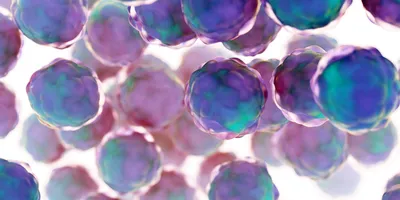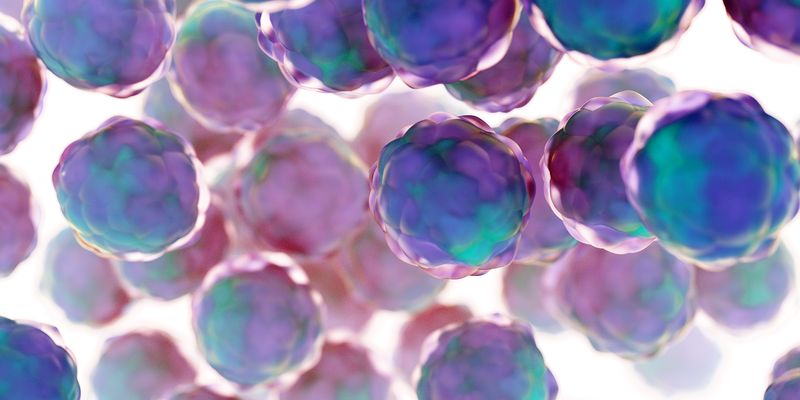
Infographics
Learn how various 3D cell culture systems differ in design, function, and application in biomedical research.
Using innovative 3D culture techniques, scientists are recreating tissue-like environments that capture the complexity of real organs and systems. From multicellular spheroids to stem cell–derived organoids and microengineered organs-on-chips, these models provide powerful tools for investigating disease mechanisms, evaluating drug safety, and accelerating translational research.
Download this infographic to learn:
- Key differences between spheroids, organoids, and organs-on-chips
- Techniques for generating and maintaining each 3D culture model
- The advantages each model offers for studying tissue and organ-level functions
Sponsored by
Top Image Credit:
iStock.com/farakos
COMPARING IN VITRO INNOVATIONS: Spheroids, Organoids, and Organs-on-Chips Different 3D cell cultures provide complementary approaches to mimic human biology, offering new insights into disease modeling, drug discovery, and regenerative medicine. By Marnie Williams& Designed by Erin Lemieux Spheroids Hanging Drop Method Cell suspension dispensed onto a petri dish Flip lid to form hanging drops Cells aggregate Spontaneous Formation on Non-Adhesive Surfaces Adherent culture Seedling in attachment plate Spheroid formation in suspension Hydrogel (scaffold-based) Seedling mixed with hydrogel Single spheroid formation Spinner Suspension Culture Scientists generate spheroids using techniques that allow controlled formation and uniform size for standardized experiments (1,2). Spheroids provide drug discovery laboratories with robust models in a controlled environment. Their uniformity and ease of handling makes spheroids particularly suitable for imaging and analysis workflows in drug development pipelines. Spheroid formation Spheroid formation from seedlings in spinner flask Organoids Researchers develop organoids by differentiating stem cells under controlled conditions with extracellular matrix scaffolds and growth factors to guide organ-specific development (3). These models mimic organ structures, enabling cellular-level drug studies and advancing personalized medicine. Organs-on-Chips Intestinal epithelial cells Bacterial cells on the inside of a layer of intestinal cells Cerebral organoid Lung organoid Liver organoid Mammary gland organoid Stomach organoid Intestinal organoid A layer of intestinal epithelial cells, which could be housed in an organ-on-a-chip model. Microchamber in Microchannel in -Microchannel out Microchamber out An organ-on-a-chip, containing a network for microchannels, a loading well, and inspection areas. Laboratorians create organs-on-chips using microfabrication to embed living cells in precisely engineered environments that replicate physiological conditions like fluid flow and mechanical forces (5). These systems enable high-resolution analysis of drug interactions and toxicity, supporting human-specific research and reducing reliance on animal models. Feature Spheroids Definition Simplified 3D clusters of cells Organoids 3D self-organizing tissue structures resembling specific organs Complex, organ-specific architecture and function High: Models organ-specific functionality Disease modeling, organogenesis, regenerative medicine Structural Features Uniform or heterogeneous spheres Complexity Low: Basic 3D aggregates Applications Drug screening, toxicity studies, cancer biology Advantages Cost-effective, simple to scale Limited structural and Limitations Variability, limited scalability functional complexity Tissue-like organization, long-term culture Organs-on-chips Microfluidic systems integrating live cells and physiological stimuli Dynamic flow, compartmentalization, mechanical forces High: Mimics organ-level interactions and fluid dynamics Precision toxicology, personalized medicine, disease-on-a-chip systems High precision, control of the microenvironment Expensive, technically complex REFERENCES 1. 2 Friedrich, J., Seidel, C., Ebner, R. & Kunz-Schughart, L. A. Spheroid-based drug screen: considerations and practical approach. Nat. Protoc. 4, 309-324 (2009). Vinci, M.et al. Advances in establishment and analysis of three-dimensional tumor spheroid-based functional assays for target validation and drug evaluation. BMC Biol. 10, 29 (2012). 3 4. Clevers, H. Modeling Development and Disease with Organoids. Cell/ 165, 1586-1597 (2016). Leung, C. M. et al. A guide to the organ-on-a-chip. Nat. Rev. Methods Primer 2,1-29 (2022). Ronaldson-Bouchard, K. & Vunjak-Novakovic, G. Organs-on-a-Chip: A Fast Track for Engineered Human Tissues in Drug Development. Cell Stem Cell 22, 310-324 (2018).
COMPARING IN VITRO INNOVATIONS: Spheroids, Organoids, and Organs-on-Chips Different 3D cell cultures provide complementary approaches to mimic human biology, offering new insights into disease modeling, drug discovery, and regenerative medicine. By Marnie Williams& Designed by Erin Lemieux Spheroids Hanging Drop Method Cell suspension dispensed onto a petri dish Flip lid to form hanging drops Cells aggregate Spontaneous Formation on Non-Adhesive Surfaces Adherent culture Seedling in attachment plate Spheroid formation in suspension Hydrogel (scaffold-based) Seedling mixed with hydrogel Single spheroid formation Spinner Suspension Culture Scientists generate spheroids using techniques that allow controlled formation and uniform size for standardized experiments (1,2). Spheroids provide drug discovery laboratories with robust models in a controlled environment. Their uniformity and ease of handling makes spheroids particularly suitable for imaging and analysis workflows in drug development pipelines. Spheroid formation Spheroid formation from seedlings in spinner flask Organoids Researchers develop organoids by differentiating stem cells under controlled conditions with extracellular matrix scaffolds and growth factors to guide organ-specific development (3). These models mimic organ structures, enabling cellular-level drug studies and advancing personalized medicine. Organs-on-Chips Intestinal epithelial cells Bacterial cells on the inside of a layer of intestinal cells Cerebral organoid Lung organoid Liver organoid Mammary gland organoid Stomach organoid Intestinal organoid A layer of intestinal epithelial cells, which could be housed in an organ-on-a-chip model. Microchamber in Microchannel in -Microchannel out Microchamber out An organ-on-a-chip, containing a network for microchannels, a loading well, and inspection areas. Laboratorians create organs-on-chips using microfabrication to embed living cells in precisely engineered environments that replicate physiological conditions like fluid flow and mechanical forces (5). These systems enable high-resolution analysis of drug interactions and toxicity, supporting human-specific research and reducing reliance on animal models. Feature Spheroids Definition Simplified 3D clusters of cells Organoids 3D self-organizing tissue structures resembling specific organs Complex, organ-specific architecture and function High: Models organ-specific functionality Disease modeling, organogenesis, regenerative medicine Structural Features Uniform or heterogeneous spheres Complexity Low: Basic 3D aggregates Applications Drug screening, toxicity studies, cancer biology Advantages Cost-effective, simple to scale Limited structural and Limitations Variability, limited scalability functional complexity Tissue-like organization, long-term culture Organs-on-chips Microfluidic systems integrating live cells and physiological stimuli Dynamic flow, compartmentalization, mechanical forces High: Mimics organ-level interactions and fluid dynamics Precision toxicology, personalized medicine, disease-on-a-chip systems High precision, control of the microenvironment Expensive, technically complex REFERENCES 1. 2 Friedrich, J., Seidel, C., Ebner, R. & Kunz-Schughart, L. A. Spheroid-based drug screen: considerations and practical approach. Nat. Protoc. 4, 309-324 (2009). Vinci, M.et al. Advances in establishment and analysis of three-dimensional tumor spheroid-based functional assays for target validation and drug evaluation. BMC Biol. 10, 29 (2012). 3 4. Clevers, H. Modeling Development and Disease with Organoids. Cell/ 165, 1586-1597 (2016). Leung, C. M. et al. A guide to the organ-on-a-chip. Nat. Rev. Methods Primer 2,1-29 (2022). Ronaldson-Bouchard, K. & Vunjak-Novakovic, G. Organs-on-a-Chip: A Fast Track for Engineered Human Tissues in Drug Development. Cell Stem Cell 22, 310-324 (2018).


